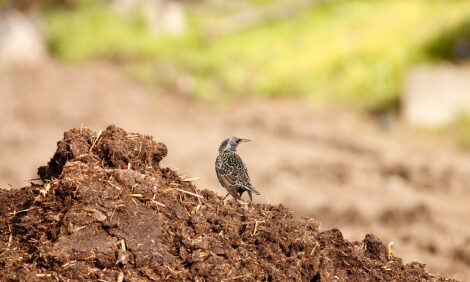



International Egg and Poultry Review
By the USDA's Agricultural Marketing Service - This is a weekly report looking at international developments concerning the poultry industry, this week looking Brazil and Argentina's recent E.N.D-free status.
Brazil
Broiler meat production continued to expand, increasing from 8.41
million metric tons (MMT) in 2004 to an estimated 9.36 MMT in 2005
and are forecast to reach 10.04 MMT in 2006. Brazil's poultry exports
topped $3.5 billion in 2005, up 35 percent from $2.6 billion in 2004.
The increase in broiler production will likely be driven by higher
domestic demand and a smaller increase in exports compared to last
year. Higher domestic interest rates combined with higher production
costs could reduce producer profits.
Economic analysts foresee economic growth in the range of 4 percent,
lower inflation, a drop in unemployment and higher real income. These
indicators are likely to influence consumer confidence as domestic
consumption supports growth in 2006. In addition, because of an
election year, additional federal funding for social programs to fight
hunger and improve nutritional levels of the poor will help increase
broiler demand – the lowest priced source of animal protein in Brazil.
Broiler exports are projected to reach nearly 3 MMT in 2006, up 5
percent compared to a 15 percent increase in volume in 2005. Exports
are likely to be under pressure due to the strength of Brazilian currency
relative to the U.S. dollar and a possible drop in poultry consumption
in some world markets due to concerns with the spread of Avian
Influenza.
In 2005, Japan became the largest market for Brazil’s broiler exports,
mostly broiler parts. Exports to Japan increased by 24 percent in
volume, and by 34 percent in value. Problems with Avian Influenza in
Asia explain most of the increase in exports to Japan.
The European Union was the second largest market for Brazilian broiler
exports, mostly broiler parts, with an increase of 24.9 percent in volume,
and 34 percent in value. The increase in broiler exports to the European
Union also reflects a significant increase in exports of processed
broilers. The European Union market accounted for nearly 80 percent
of all processed broiler exports from Brazil.
Saudi Arabia, traditionally Brazil’s largest single export market for
poultry, now ranks third. In 2005, Saudi Arabia increased imports of
Brazilian broilers, mostly for whole broilers, 14 percent in volume and
38 percent in value. Saudi Arabia also accounted for nearly 45 percent
of all Brazilian broiler exports to the Middle East.
Russia remained as the 4th largest market for Brazilian broiler exports
in 2005 despite quota restrictions. Shipments to Russia totaled
258,187 metric tons, up 34 percent from 2004. The value of broiler
exports to Russia was significantly up in 2005 by 65 percent, reflecting
a larger increase in broiler parts.
Source: USDA/FAS
U.S. Adds Argentina to the List of Regions Considered Free of Exotic Newcastle Disease
On January 30, 2006 the Federal Register posted an announcement
adding Argentina to the list of regions considered free of exotic
Newcastle disease. Argentina was also added to the list of regions
that, although declared free of exotic Newcastle diseases, must
provide an additional certification to confirm that any poultry or poultry
products offered for importation into the U.S. originate in a region free
of the disease. Certification must also ensure that prior to importation
into the U.S. the poultry/poultry products were not commingled with
poultry/poultry products from regions where exotic Newcastle disease
exists.
Argentina has great expectations for the opening of the U.S. market.
Traders believe the market will move slowly, with many things to learn
and adjust. Frozen breasts seem to have the greatest market potential.
Argentina's major export markets are China, Chile, South Africa,
Germany, The Netherlands, Saudi Arabia and Russia. China is
Argentina’s largest poultry market volume wise, mainly chicken paws
and wings. In 2005 Argentina exported 20,035 tons of poultry byproducts
to China valued at $12.4 million.
Chile and Argentina have a private agreement to limit Argentine poultry
exports to about 1,000 tons a month. In 2005 chicken meat exports to
Chile totaled 14,948 MT ($15.4 million). Argentina exported 7,176 MT
of chicken meat and 5,161 of poultry by-products to South Africa in
2005, with a value of $9.9 million. Chicken meat exports to Germany
totaled 5,569 MT ($12.2 million), The Netherlanlds 5,562 MT ($9.6
million), Saudi Arabia 6,027 MT ($6.7 million) and Russian 8,297 MT
($8.9 million).
Source: Federal Register, USDA/FAS, Senasa Argentina
To view the full report, including tables please click here
Source: USDA's Agricultural Marketing Service - 7th February 2006








